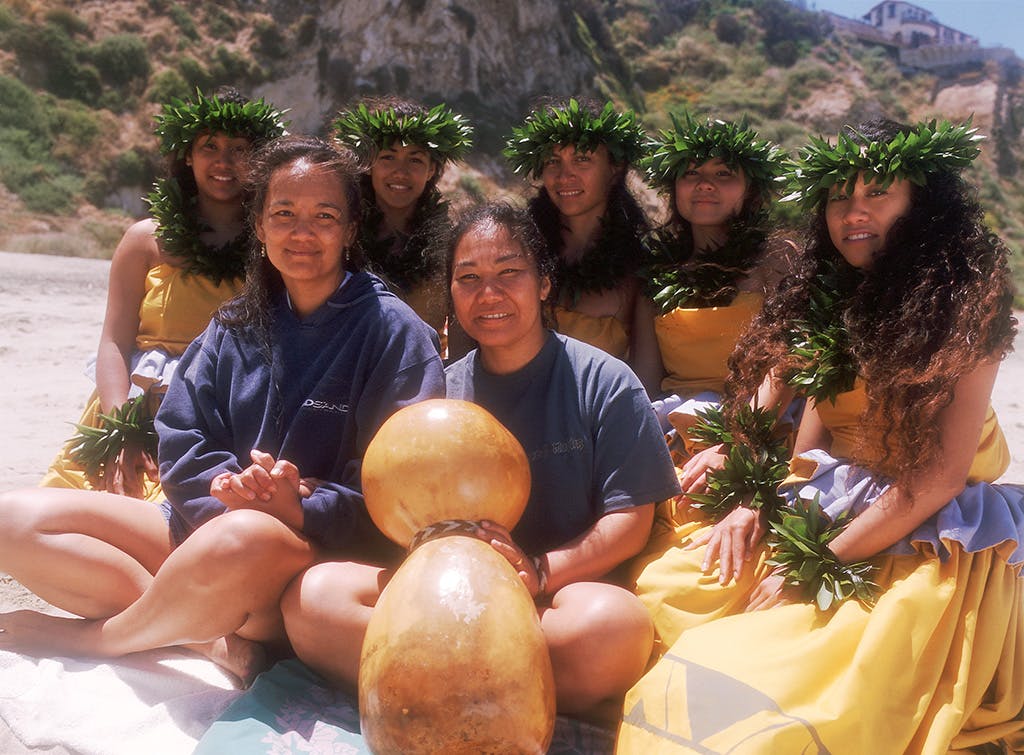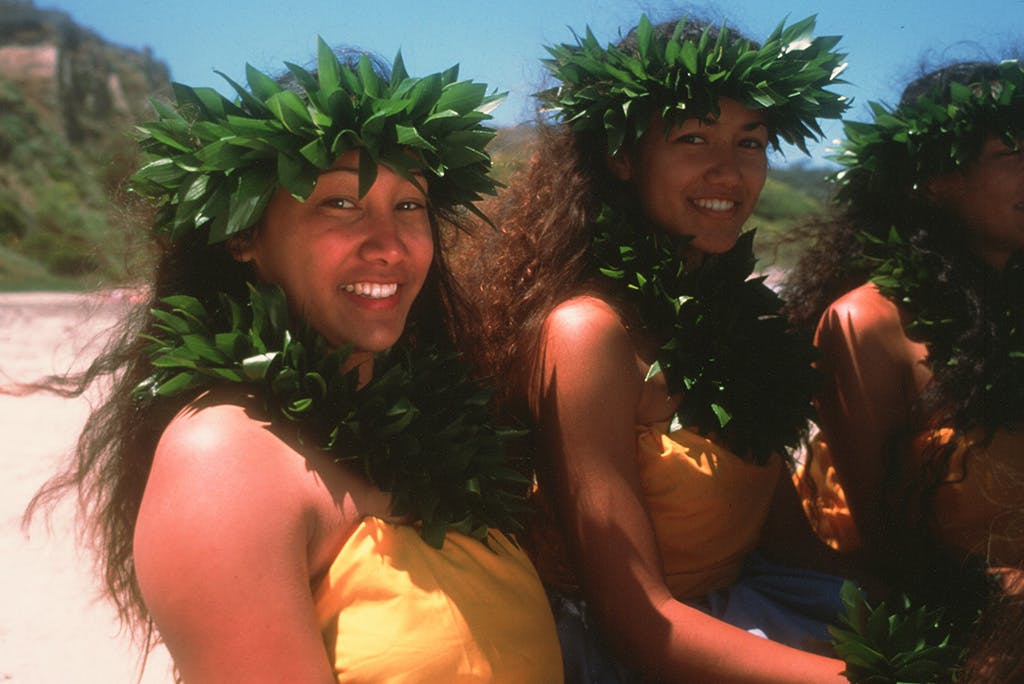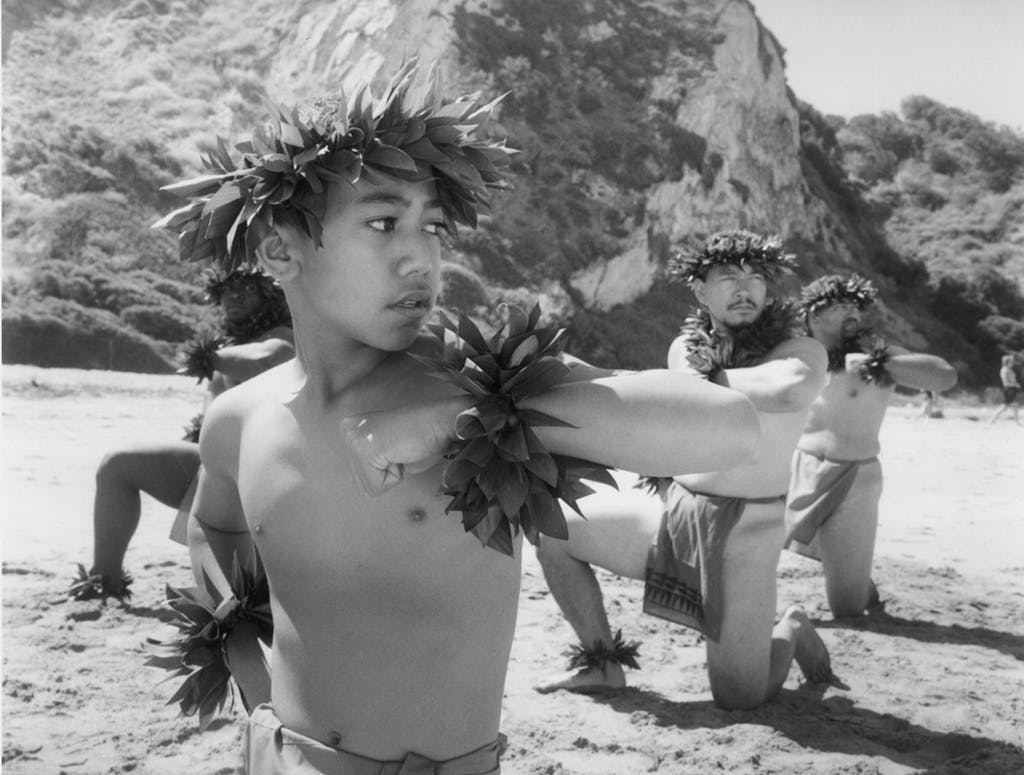American Aloha: Hula Beyond Hawai’i, 2003
Beta SP Video
American Aloha: Hula Beyond Hawai’i shows the survival of the hula as a renaissance continues to grow beyond the islands. With the cost of living in Hawai’i estimated at 27 percent higher than the continental United States, large numbers of Hawaiians have left the islands to pursue professional and educational opportunities. Today, with more Native Hawaiians living on the mainland than in the state of Hawai’i, the hula has traveled with them. From the suburbs of Los Angeles to the San Francisco Bay Area, the largest Hawaiian communities have settled in California, and the hula continues to connect communities to their heritage on distant shores.
Collaborators: Lisette Flanary, Mark Eby, Dena Mermelstein
Featuring: Sissy Kaio & Hula Halau ‘O Lilinoe; Mark Keali’I Ho’omalu & Na Mele Hula ‘Ohana; Patrick Makuakane & Na Lei I Ka Wekiu
Broadcast on the PBS series POV in 2003 and 2004 with over 3.5 million viewers
Few American icons are as well known for their popular kitsch as the hula dance. From old Hollywood movies to entertainment for tourists, the hip-swaying girls in grass skirts and colorful lei have long masked an ancient cultural tradition. Now, after years of being shadowed by stereotypes, the hula is experiencing a rebirth that celebrates Hawaiian culture. Hawaiians — wherever they live — are challenging misconceptions to redefine the evocative storytelling art of the hula dance across the American mainland.
For Hawaiians, the hula is a way of life. Since ancient times, hula has preserved history through oral tradition and expressed the soul of Hawaiian spirituality. The sacred chants communicated with the gods, recorded genealogy, honored the chiefs, exalted nature and celebrated humanity. Yet by the early 20th century, many of the unique cultural traditions of Hawai’i were in danger of disappearing — especially the hula. Denounced as a “heathen” practice with the arrival of American missionaries, the hula was soon outlawed and forced underground. Hawaiians were discouraged from being proud of their ancestry and soon even the language was banned. Nearly lost after decades of assimilation following the overthrow of the Hawaiian monarchy, the hula emerged as a symbol of fierce ethnic pride during the Hawaiian renaissance that swept the islands in the 1970s.
PRODUCED IN ASSOCIATION WITH
POV / American Documentary, Inc.
The Independent Television Service
Pacific Islanders in Communications
FUNDING PROVIDED BY
The National Endowment for the Arts
The New York State Council for the Arts
The Corporation for Public Broadcasting
The National Initiative to Preserve America’s Dance
The Wallace Alexander Gerbode Foundation
The Muriel McBrien Kaufmann Foundation
The Mary Duke Biddle Foundation
Winner of a Cine Golden Eagle in 2003
FESTIVALS + SCREENINGS
CHICAGO INTERNATIONAL TELEVISION FESTIVAL
October 2004
Chicago, USA
Winner of a Silver Hugo
WORLDFEST HOUSTON
April 2004
Houston, USA
Bronze Award in Cultural Documentary
REEL WORLD FILM FESTIVAL – WORLD’S FARE
April 2004
Toronto, Canada
NATIVE AMERICAN FILM AND VIDEO FESTIVAL
December 2003
Smithsonian, New York, USA
HAWAI’I INTERNATIONAL FILM FESTIVAL
October 2003
Honolulu, Hawai’i
MAUI FILM FESTIVAL
June 2003
Maui, Hawai’i
ASIAN CINEVISION’S INTERNATIONAL FILM FESTIVAL
June 2003
New York, USA
PACIFIKA: THE NEW YORK HAWAIIAN FILM FESTIVAL
May 2003
New York, USA
VISUAL COMMUNICATIONS LOS ANGELES ASIAN PACIFIC FILM & VIDEO FESTIVAL
May 2003
Los Angeles, USA
DANCE SCREEN FESTIVAL – IMZ
December 2002
Monaco
Nominated for best dance documentary



